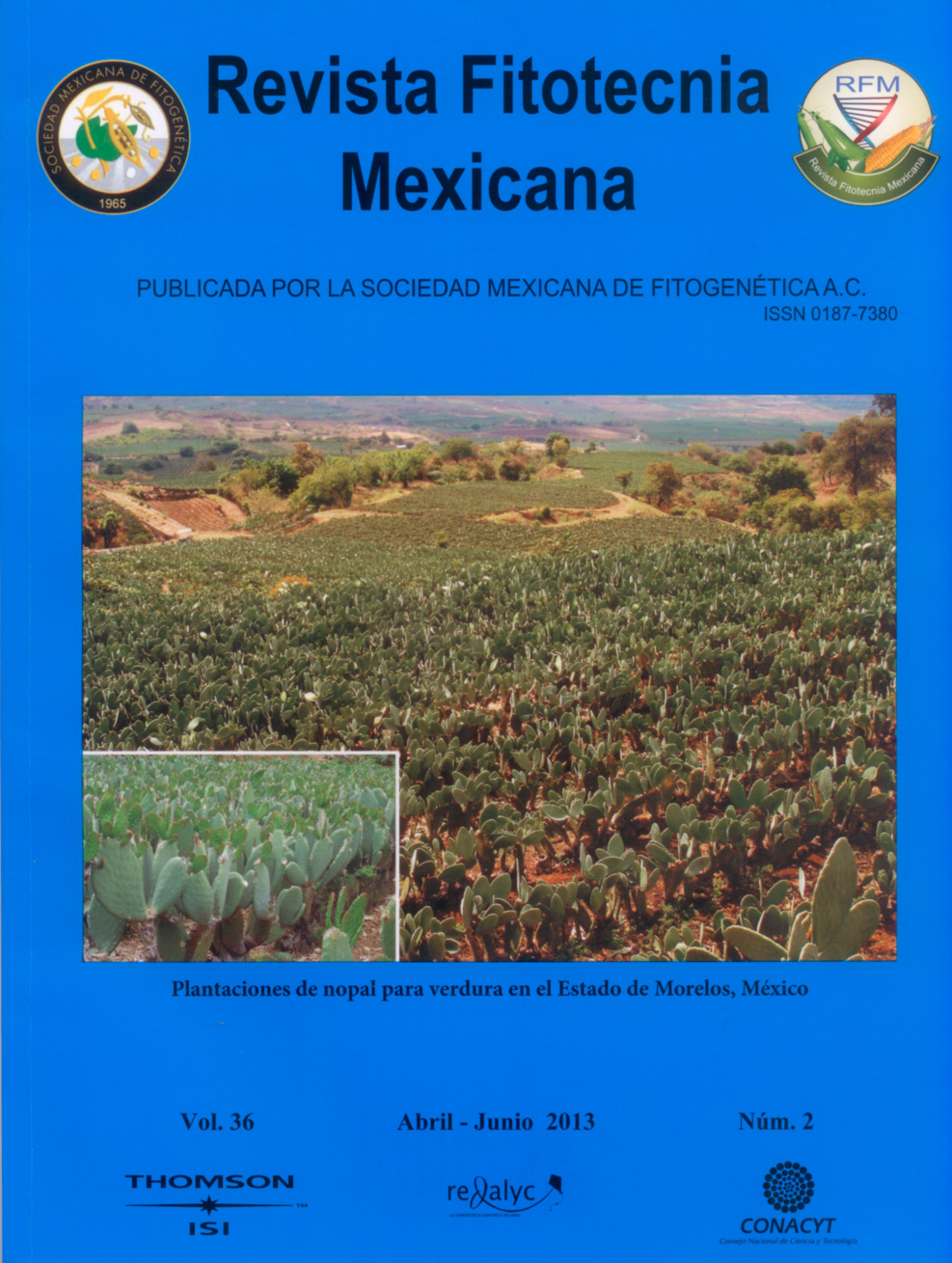RELEVANCE OF NUMBER AND SEQUENCE COMPOSITION OF KNOBS IN THE CHARACTERIZATION OF MAIZE AND TEOSINTE
Main Article Content
Abstract
Knobs are heterochromatic blocks that can be found in 34 different chromosomal locations in maize (Zea mays ssp. mays) and teosintes (Zea mays ssp. parviglumis, Zea mays ssp. mexicana, Zea mays ssp. huehuetenanguensis, Zea luxurians, Zea nicaragüensis and Zea diploperennis). These are variable in number, size and position among different accessions of maize and teosintes and can be detected by chromosome banding C and DAPI (4', 6'-diamidino-2-phenylindole), both in methaphases and in interphase nuclei. At a molecular level they are constituted by two families of sequences (180-bp and TR-1), and are represented by thousands to millions of copies, in different proportions to each other, forming the different types of knobs. In this study we analyzed if the variation in the number of knobs regions and the composition of their sequences allow the cytogenetic characterization of different maize and teosinte accessions. For this study, we applied classical (DAPI) and molecular (Fluorescence In Situ Hybridization-FISH) cytogenetic techniques. DAPI staining showed variations in the number of DAPI+ regions (knobs) on chromosomes and interphase nuclei. FISH showed co-localized hybridization signals with the DAPI+ regions; it also revealed variation of the sequences composition of knobs among the accessions tested. These results allowed finding differential hybridization patterns to discern different accessions of maize and teosintes herein studied, therefore providing data for cytogenetic characterization and contributing to the knowledge of the genetic variability of the genus Zea.

